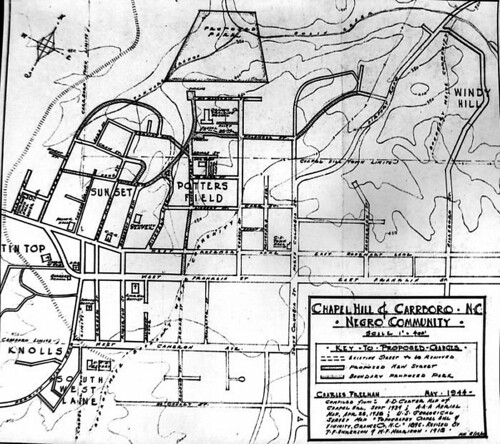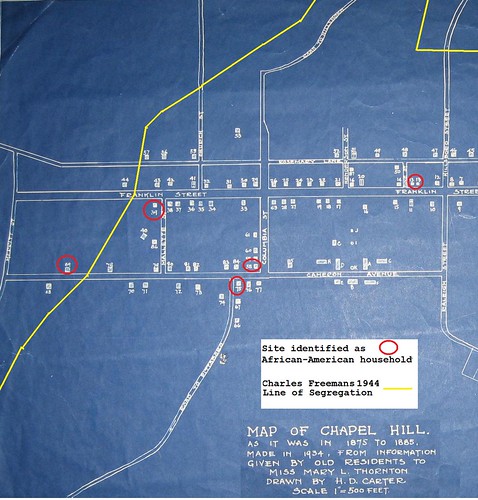The Map of Chapel Hill as it was in 1875-1885 (H. D. Carter, 1934) shows a number of houses that are identified as African-American households. I thought it would be intersting to compare the distribution of those households with the early to mid 20th century housing segregation line.
In 1944, Charles Freeman made a map as a part of his Masters Thesis showing housing segregation in Chapel Hill:

Having lived in the Northside neighborhood in Chapel Hill, I can say that Freeman's color segregation line was largely still the case into the 1990's.
So I copied over onto H. D. Carter's map that segregation line in yellow and then circled the 1875-1885 African American households:

And the result is striking. Only one of the 1875-1885 African American households was in an area that was a segregated black neighborhood. All the rest were in areas that were white-only neighborhoods in the 20th century.
This pattern is consistent with the findings of professional historians and geographers - that segregation was something that was imposed in the South in the period 1890-1900, not immediately after the Civil War. I believe research has been done on Charleston, SC illustrating this.
While Chapel Hill never had any sort of housing segregation ordinances (de jure), there was a strong de facto tradition. As well, when we look at the restrictive covenants of neighborhoods in and near Chapel Hill, we can see that developers imposed their own Whites-only covenants in some neighborhoods such as Greenwood and Dogwood Acres. Those developments happened in the 1930's and 1940's, though. Prior to that time, it appears that housing segregation was purely a matter of tradition - enforced by the men who ran the local real estate market, rather than the formal power of the government.
No comments:
Post a Comment